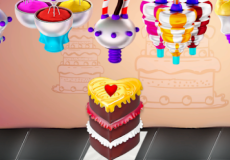

Your Turn To Die
Advertisement
Your Turn To Die is a dialogue-based survival game that uses logic and reasoning as its main progression tools. The player controls Sara Chidouin, who becomes part of a group trapped in an enclosed facility. Each section of the game introduces a new rule set that requires investigation, cooperation, and elimination. The system relies on conversation, deduction, and voting, replacing physical confrontation with intellectual evaluation.
Advertisement
Similiar games
Your Turn To Die is a dialogue-based survival game that uses logic and reasoning as its main progression tools. The player controls Sara Chidouin, who becomes part of a group trapped in an enclosed facility. Each section of the game introduces a new rule set that requires investigation, cooperation, and elimination. The system relies on conversation, deduction, and voting, replacing physical confrontation with intellectual evaluation.
Game Flow and Structure
The story unfolds through alternating segments of exploration and debate. During investigation phases, the player collects data, examines objects, and interacts with others to form hypotheses. When enough information is gathered, the discussion begins, where choices determine who advances and who is removed. Each round demands observation, logic, and the ability to interpret tone and context.
Central Mechanics
Unlike many narrative games, Your Turn To Die emphasizes structured reasoning over chance or reflex. Every decision contributes to progression and influences subsequent events.
Core components include:
· Environmental exploration and item collection
· Analysis of dialogue and identification of contradictions
· Decision-making with limited verification
· Tracking character reactions and alignment
· Multiple endings linked to choice history
These functions combine to create a consistent cycle of learning, testing, and correction. Success depends on clarity and timing rather than memorization or repetition.
Character Dynamics
The narrative develops through interaction among the participants. Each has a role shaped by fear, calculation, or necessity. Dialogue changes depending on earlier choices, creating new alliances or conflicts. The game’s focus on structured communication allows tension to build naturally through logic rather than through emotional manipulation. As the story continues, players must evaluate behavior and language to anticipate future risks.
Replay and Interpretation
Your Turn To Die offers multiple outcomes that reward repeated analysis. Every route presents new data that alters perception of earlier events. The branching structure transforms replaying the game into a process of synthesis rather than repetition. By centering the design around information management and judgment under uncertainty, the experience demonstrates how decision systems function in controlled environments and how players adapt when truth depends on interpretation.
Discuss Your Turn To Die




















